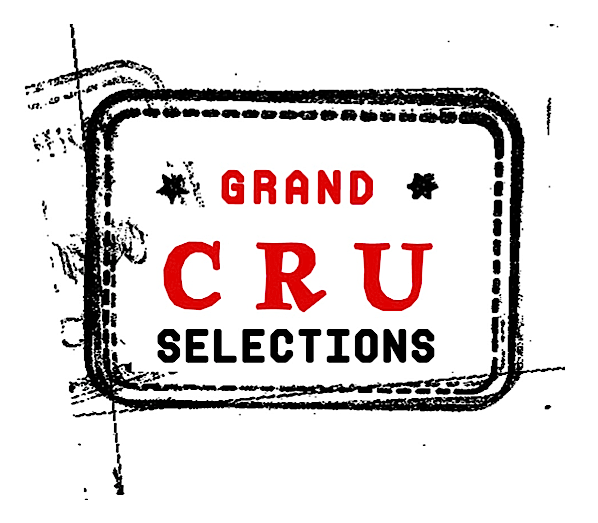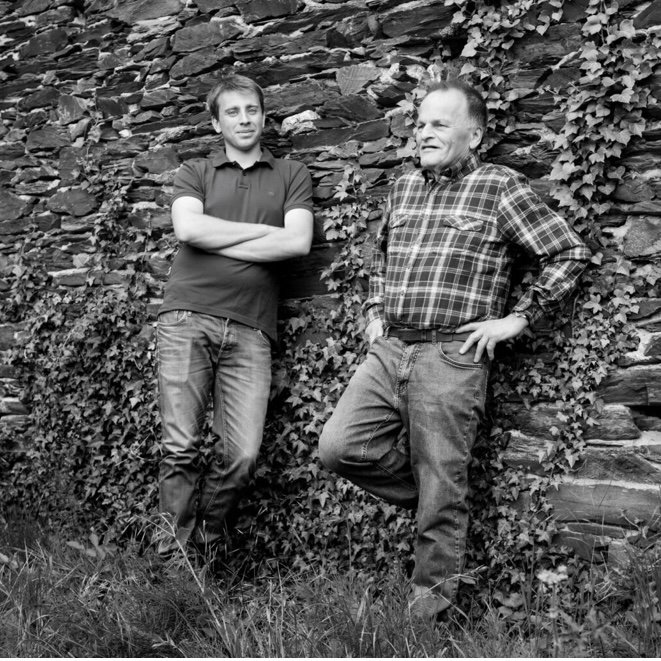Ludes
Thörnich, Mosel, Germany
Julian Ludes & his uncle Hermann Ludes
Photo Courtesy of vom Boden.
These are truly old-school Mosel Rieslings; in my mind these are the rustic, transparent, bracing – even a touch brutal – Mosel wines that were probably common decades ago. Yet this style has been nearly forgotten, pushed aside by the riper, fruitier, easier style of plush-and-giving Mosel wine.
To my mind, Hermann Ludes, Ulli Stein and Erich Weber are the current canonical masters of this style. The best Ludes wines also have something of the sleek tension, the force that is the calling card of Julian Haart’s wines. Yet perhaps the closest comparison in our book is with the wines of Weiser-Künstler, with their faceted, crystalline and largely mineral-and-earth driven language. Obviously, all the Mosel growers in our portfolio have some relationship to this style – there is a reason we are attracted to all these wines.
-Stephen Bitterolf, vom Boden
-
Julian Ludes (pronounced “LOOD-es”) has been working with his uncle since 2017. His grandfather Hermann Ludes started this eponymous estate in the 1950s– an old school, legendary-in-a-quiet-sorta-way estate. Weingut Hermann Ludes has flown under the radar for decades for a number of reasons. First, the village Thörnich is located in an upper-section of the Mosel, far away from the famous “Hollywood Mile” of the Mosel. Further, Thörnich is legendary for shaping wines that are raw and tensile; the wines of Hermann Ludes especially can be brutally structured. In other words these are not easy wines. Second, the founder’s son and Julian’s uncle, also named Hermann Ludes, speaks no English and has made, over the decades, exactly zero attempts to market himself or to try and placate any whims or fashions, customers, exporters, importers or journalists. He has made his wines his way; he has spent a lifetime in his vineyards. That has been enough.
Words courtesy of vom Boden.
-
Currently, the Hermann Ludes estate is the largest single owner of Thörnich’s Grand Cru Ritsch vineyard, owning most of the old-vine, ungrafted parcels. While the Ritsch does have a prime south, south-west exposure, two side valleys open up on either side of the site, exposing it to the frigid air from the plateau of the Eifel – you can see this quite clearly in the photograph above. This cold air rushes into the vineyard at night; it is demonstrable. During harvest here the acid levels simply do not drop in the same way they do in most of the other sites of the Mosel. (vom Boden)
-
In total, they are farming around 11 hectares. Six hectares are flat vineyards in and around Thörnich. Today, most of this fruit is sold bulk, though they may use some of the gravelly flat sites to blend into the basic “Hermann,” or not, depending on the quality of the vintage.
From the village-level Thörnich bottling on up, all the fruit is from steep slopes. Julian and his uncle own a bit more than four hectares in the Ritsch; they also have tiny holdings – a bit more than a hectare total – in the Thörnicher Enggas, Klüsserath Bruderschaft and Pölicher Held. The Ritsch, however, is the diamond in the crown – and a big diamond at that. The average vine age here is about 75 years old, many of the vines are ungrafted. Every site they own in the Ritsch is inaccessible by any machine; terraced vineyards with walls at the top and the bottom. Absolutely everything must be done by hand. (vom Boden)
-
They are nearly always the first estate to harvest in the village and the last to finish harvesting. They are looking for healthy grapes that are ripe yet still have some green. The estate direct-presses nearly everything; while they have a pneumatic press, they do not rotate it, so it functions a bit more like a basket press. The press cycles are very low-pressure and very long. Each parcel is fermented separately and naturally. Since the early 1990s the estate has used only stainless steel; since 2000 they have used only screw caps. (vom Boden)

